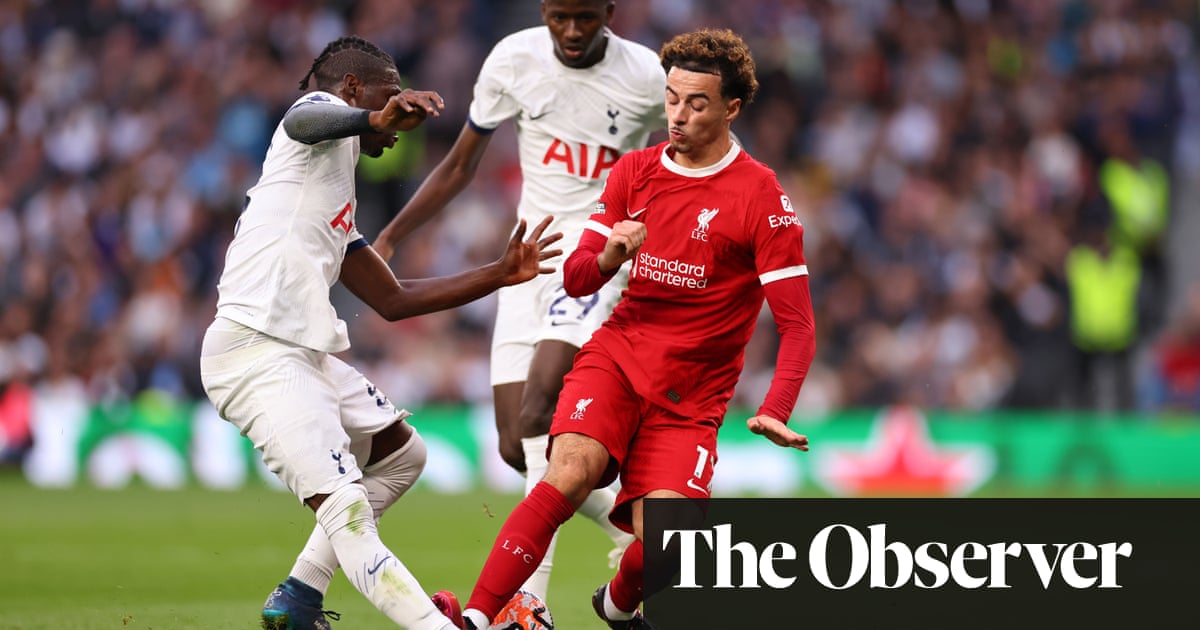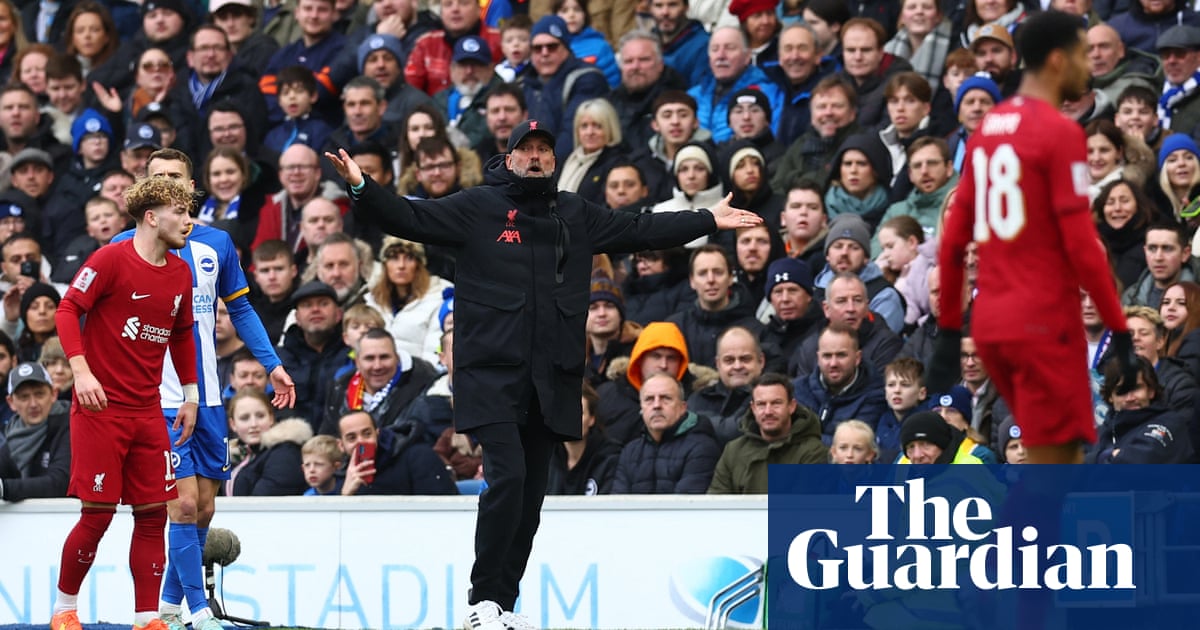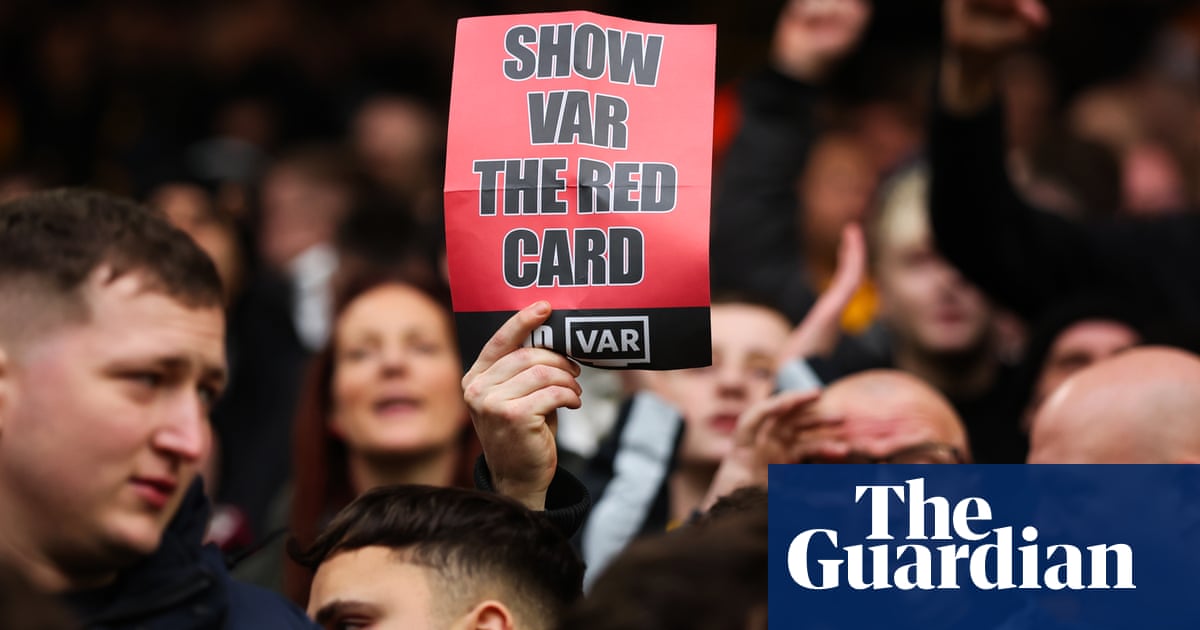
Defeats in football are often described as agonising. But agony, to be really convincing, must be extended, unrelieved and built towards a decisive peak. Ideally, agony should look a bit like this.
There was a rare kind of pain here for Liverpool and for Jürgen Klopp, who, as Spurs scored their winning goal, was standing on the touchline ready to send on Darwin Núñez, but ended up just clutching hold of his arm, pummelling it vaguely, then shoving him back towards the bench. Define a bad day on the road. Let’s see. Start with two red cards, one of them a little harsh and interventionist, an example of yet more unnecessary Big Refereeing Energy.
Chuck in a goal incorrectly disallowed for a micro-offside just when you thought you’d taken the lead against the head. Add one draining, doomed defensive rearguard. Plus, of course, a goal conceded to lose the game 2-1 in the sixth minute of added time. Actually, make that an own goal. Oh. And there’s a train strike.
This was still a wonderful football match. It was a significant victory for Tottenham, who probed and nibbled at Liverpool’s 10, then nine men for the whole second half, who seemed destined for a pyrrhic point, but found enough edge, and blood and luck, to press their case right at the death. Happy teams tend to win this kind of game.
For Liverpool the game will continue to revolve around two refereeing decisions. First, Luis Díaz’s offside goal, which was simply a bodge and a fudge, VAR failing to re-award the goal when it turned out that Díaz was very clearly onside. The PGMOL ended the evening issuing an apology to Liverpool for what was a really dreadful, game-altering mistake.
It still seems strange that so much of the exhausting debate around VAR seems to boil down to basic issues of competence. These are professionally trained officials unable to manipulate their own technology, and to make a correct, very obvious call on one of the few things that always happens in every game. It doesn’t have to be like this. Imagine if these people were in charge of air traffic control.
But in a way the mistake for Díaz’s goal was easier to understand because it was simply an error. The sending-off of Curtis Jones in the 26th minute was more puzzling, and indeed more representative of the issues with subjectivity around VAR, the illusion of precision or objective truth.
This was a very modern kind of red card: a red card that wasn’t obviously unfair or incorrect; but which also wasn’t obviously correct or fair. It was a red card that happened because the tools exist to call it into being. And because refereeing a football match has now become an active pursuit, the refereeing cadre mob-handed and tooled-up, poised with its finger on the button.
As Klopp pointed out afterwards, it was a slow-motion red card. Initially Simon Hooper awarded a foul and a yellow card as Jones tackled Yves Bissouma at close quarters. Hooper was duly summoned to the VAR screen and shown initially a freeze frame of the contact, followed by repeated slow motion replays of Bissouma’s ankle turning over.
This seems misleading in itself, unrepresentative of how sport happens in real time. Jones’s foot was off the ground, but it also slid over the top of the ball at high speed in a tiny space, end point of micro-calculations made, brain and limbs and moving ball triangulated. It was mistimed and overeager. But his foot was also touching the ball when he made contact with Bissouma’s ankle. And we know how this works. Freeze frame any incident, slow it down, it will instantly ooze guilt. Looking up from Bissouma’s ankle you half expected to see a mystery man with a trilby behind the fence by the railroad tracks, a puff of dust on the grassy knoll.
But then, this is just how the system is designed to work, an example of the new active refereeing, of approaching your role with Main Character Syndrome. Would anyone have cared, or gone back to that moment, if a yellow card had been deemed enough?
There was something equally grim in the stadium feed showing the challenge on the massive screen as Jones left the pitch, ensuring howls and pantomime horror. Here we had television interfering with the real-time experience, directing the reactions of the crowd.
It was, in between all of this, an excellent game of football. Spurs took the lead with a goal from Son Heung-min made by a wonderful pass from James Maddison, perfectly calibrated with speed and fade, like a shot rolled up the green towards the hole, almost stopping by the time Richarlison sprinted on to it.
Cody Gakpo equalised before half-time. With 69 minutes gone Diogo Jota picked up a second yellow card, leaving Liverpool to play out the game a 5-3-0 formation. It felt like it might be enough, right up until Tottenham’s final attack, the ball deflected into his own net by Joël Matip, who crumpled on the spot like a gut-shot cowboy, the night of agonies complete.












